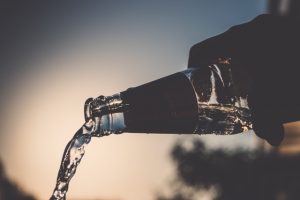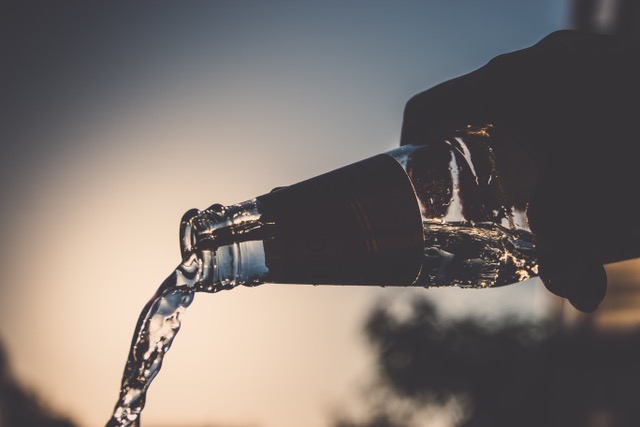Pharmaceutical Pollutants in the Public Water Supply and Why the Clean Water Act Needs to be Updated
Authored by: Haley Walter, staff editor

The Federal Water Pollution Control Act was passed in 1948, and then reorganized and expanded in 1972 to be the legislation we know today as the Clean Water Act (CWA).[1] The Clean Water Act was later amended to include more “extensive fine-tuning” for its programs in 1977, 1981, and 1987.[2] Since 1987, there have been no major amendments to the Clean Water Act—despite a worsening environmental-climate—due to a lack of political imperative for fundamental change.[3] The Clean Water Act’s lack of newness means that it has not been adapted to fit shifting environmental conditions and address emerging water pollution problems like the growing amount of pharmaceutical pollutants in the public water supply.
In 2008, an investigation by the Associated Press found an “array of pharmaceuticals in the drinking water supplies of at least 41 million Americans.”[4] The pharmaceuticals discovered in the public water supply ranged from antibiotics, anticonvulsants, and mood stabilizers, to sex hormones.[5] Pharmaceuticals like these find their way into the public water supply through waste from hospitals, health clinics, pharmacies, pharmaceutical manufacturers, and the inappropriate disposal of medications.[6] While wastewater is eventually treated and cleaned at drinking water treatment plants, most treatments do not remove all drug residue in the water.[7] This is because unlike other water pollutants, pharmaceutical pollutants persist or only partially degrade during water treatment since they are inherently designed to “be persistent so as to reach the body part targeted for pharmacological benefit.”[8]
Pharmaceuticals in the public water supply are believed to have a potentially serious impact on human health and environmental health.[9] Human exposure to pharmaceutical water pollution occurs through ingesting contaminated water, consuming fish and shellfish that have “bioaccumulated pharmaceuticals,” or through direct contact with contaminated water.[10] Pharmaceutical water pollutants threaten human health because the continuous exposure to a mixture of random pharmaceuticals potentially interferes with daily bodily functions and long-term growth processes.[11] While current reports find that the risk of the concentration of pharmaceutical pollutants in the public water supply is minor, more research is crucially needed to explore how the total population of pharmaceuticals present in the public water supply can impact human health.[12]
Environmental exposure to pharmaceutical water pollution occurs through direct pollution from the public water supply into the natural habitats and water sources of countless species.[13] Pharmaceutical water pollutants threaten environmental health because they are shown to interfere with the endocrine system—the system that controls hormone production, transport, metabolism, and more—of specific populations of “invertebrate, fish, avian, reptilian, and mammalian” species.[14] Therefore, pharmaceutical pollutants in the public water supply affect organisms throughout the entire food web and pose potentially severe consequences if continuously unregulated.[15]
As of today, the Environmental Protection Agency (EPA) has never “developed water quality criteria or standards under the CWA for pharmaceuticals . . . and NPDES permits do not currently include any limitations on the discharge of pharmaceutically active pollutants.”[16] Though certain pharmaceuticals and pharmaceutical wastes are subject to some statutory and regulatory mechanisms, pharmaceuticals remain “outside the scope of the law.”[17] Pharmaceutical pollution in the public water supply is an environmental issue that potentially threatens the human and environmental health of every being with access to a water source that is connected to the United States public water supply. Studies show that pharmaceutical water pollutants already impact the life cycle and reproductive ability of aquatic vertebrates in the environment.[18] Therefore, the EPA should immediately begin researching and studying the potentially widespread concentration of pharmaceutical pollutants in the public water supply, and how this could affect (and may have already affected) human health long-term. Likewise, the EPA should consider amending the CWA to address emerging environmental water pollutants—like pharmaceutical pollutants—and incorporate new standards into the Act to prevent further unregulated pollution of our public water supply.
[1] Summary of the Clean Water Act, https://www.epa.gov/laws-regulations/summary-clean-water-act (last visited Mar. 3, 2021).
[2] Ridgway M. Hall Jr., The Clean Water Act of 1977, 11 Nat. Resources Law. 343, 351—58 (1979).
[3] Kenneth M. Murchison, Learning from More Than Five-and-a-Half Decades of Federal Water Pollution Control Legislation: Twenty Lessons for the Future, 32 B.C. Envtl. Aff. L. Rev. 527, 586 (2005).
[4] AP Finds Prescription Drugs in Drinking Water, Water & Wastes Digest (Mar. 10, 2008), https://www.wwdmag.com/ap-finds-prescription-drugs-drinking-water.
[5] Id.
[6] Gabriel Eckstein, Drugs on Tap: Managing Pharmaceuticals in Our Nation’s Waters, 23 N.Y.U. Envtl. L.J. 37, 43 (2015).
[7] See supra, note 4.
[8] See supra, note 6, at 45.
[9] See supra, note 6, at 37.
[10] See supra, note 6, at 46.
[11] Emily Yolk, The Environmental Impact of Pharmaceuticals in Our Water, The Envtl. Magazine (Jan. 28, 2019), https://emagazine.com/pharmaceuticals-in-drinking-water/.
[12] Pharmaceuticals in the Water Environment, Natl. Assc. of Clean Water Agencies, 4,17 (2009).
[13] See supra, note 6, at 50.
[14] Id.
[15] Id.
[16] U.S. Gov’t. Accountability Office, GAO-11-346, Action Needed to Sustain Agencies’ Collaboration on Pharmaceuticals in Drinking Water, 11 (2011).
[17] See supra, note 6, at 40.
[18] See supra, note 6, at 50.

